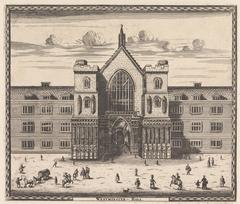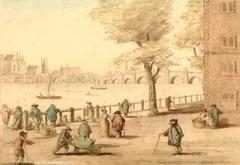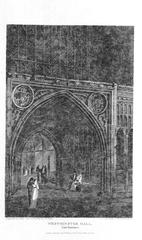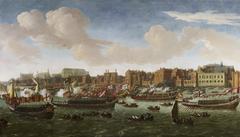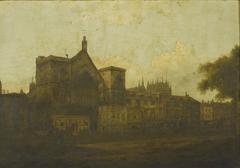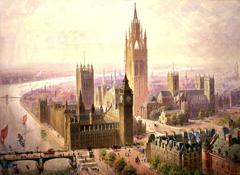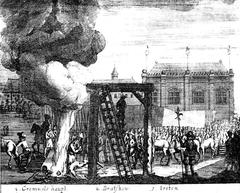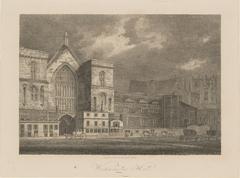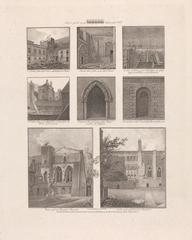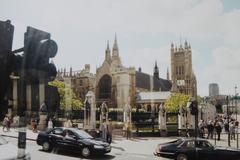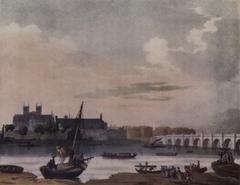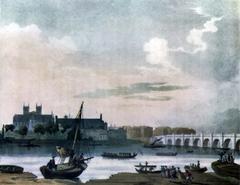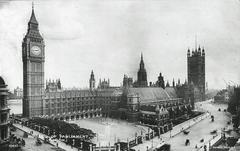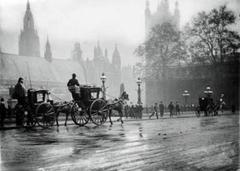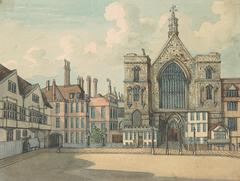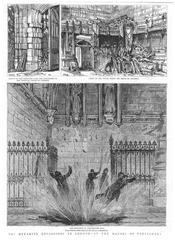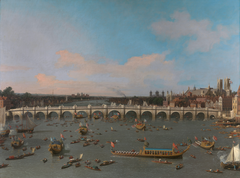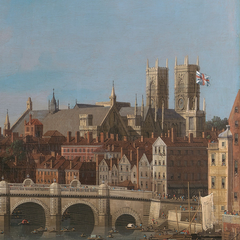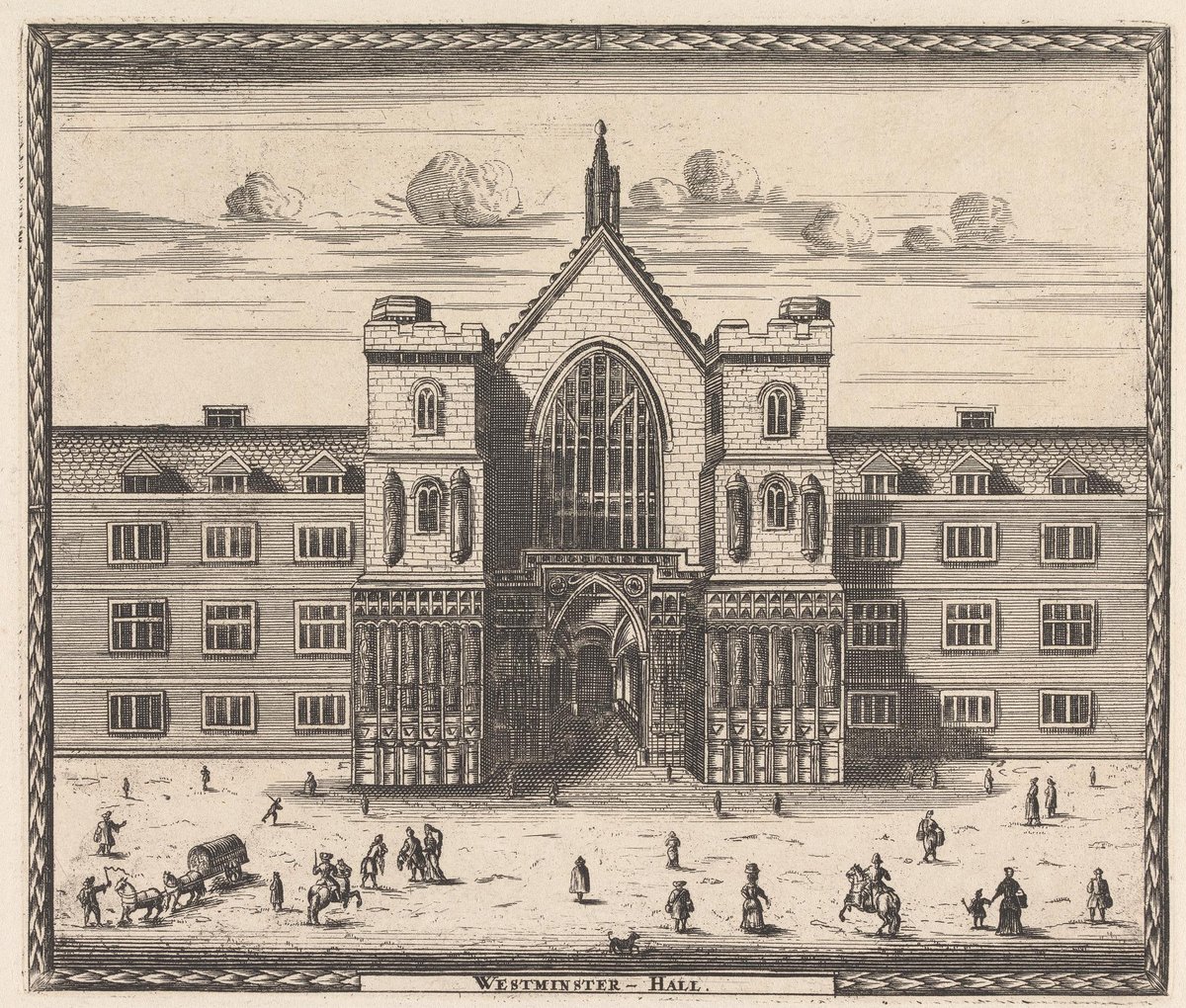
Westminster Hall London Visiting Hours, Tickets, and Historical Sites Guide
Date: 14/06/2025
Introduction to Westminster Hall London
Westminster Hall is a monumental landmark and the oldest surviving part of the Palace of Westminster. With its roots stretching back over 900 years, it embodies the evolution of the British monarchy, democracy, and justice. Built between 1097 and 1099 under William II, the hall was designed to awe with its immense scale, formidable Norman stonework, and later, its magnificent hammer-beam roof—one of the largest in Northern Europe. Over the centuries, Westminster Hall has hosted coronation banquets, pivotal state trials, and ceremonial events such as the lying-in-state for Queen Elizabeth II. Today, it remains a vibrant venue for parliamentary debates and national occasions, connecting Britain’s medieval past with its present governance.
This guide provides an in-depth look at Westminster Hall’s architectural marvels, historical legacy, and practical visiting information, including hours, ticketing, accessibility, and nearby attractions. For authoritative details and the latest updates, refer to official resources such as the UK Parliament website and trusted tour providers (Historic UK; Wikipedia; Strawberry Tours).
Table of Contents
- Visiting Westminster Hall: Practical Information
- Historical Overview
- Architectural Significance and Visitor Guide
- Visitor Experience
- Frequently Asked Questions (FAQ)
- Conclusion
- References and Useful Links
Visiting Westminster Hall: Practical Information
Visiting Hours
Westminster Hall is generally open to the public as part of the Palace of Westminster tours:
- Saturdays: 9:30 AM – 4:30 PM, year-round
- Weekdays (Summer Recess, July–August): 10:00 AM – 5:30 PM
- Special Parliamentary Recesses: Check exact dates for Easter and Christmas hours
Hours may vary on public holidays or during parliamentary sessions, so always check the UK Parliament’s official website before visiting (Strawberry Tours).
Tickets and Admission
Entry to Westminster Hall is included with all Palace of Westminster tour tickets. Tickets can be purchased:
- Online (recommended for guaranteed entry)
- Onsite at the ticket office (subject to availability)
Pricing (2025):
- Self-guided multimedia tour: £26 adult (£28 on the day); £19 youth (16–24, £21 on the day); free for children 5–15 with advance booking (£9 on the day)
- Guided tour: £30 adult
- Concessions for UK Armed Forces and visitors with disabilities (essential companions admitted free)
Tickets are released three months in advance and book up quickly, especially during peak seasons (The Tour Guy).
How to Get There
Westminster Hall is centrally located in London:
- Underground: Westminster Station (Jubilee, District, Circle lines) – 4 minutes’ walk
- Bus: Multiple routes stop nearby
- River: Thames sightseeing cruises stop at Westminster Pier
- Address: Cromwell Green Entrance, SW1A 0AA
Parking is extremely limited; public transport is strongly advised (Walks.com).
Accessibility
The hall is fully accessible:
- Step-free entry and lifts
- Accessible toilets
- Multimedia guides with hearing loops and British Sign Language support
- Assistance dogs welcome
- Essential companions for disabled visitors are admitted free
Contact visitor services in advance for specific accommodations (The Tour Guy).
Nearby Attractions
- Westminster Abbey
- Big Ben
- Houses of Parliament
- Churchill War Rooms
- St. James’s Park
- The River Thames
Combine your visit for a full day of London’s top historic sites.
Guided Tours and Special Events
- Guided tours: Led by expert guides, including access to the House of Commons, House of Lords, and Speaker’s House (where available)
- Self-guided multimedia tours: Available in 10 languages
- Special events: Look for seasonal exhibitions and state occasions; check schedules before your visit (Strawberry Tours)
Best Photographic Spots
- The vast hammer-beam roof
- Carved royal statues and plaques
- Early morning light through tall arched windows
Photography is generally permitted in Westminster Hall but may be restricted during special events.
Historical Overview
Origins and Early Construction
Commissioned by William II (William Rufus) and completed in 1099, Westminster Hall was the largest hall in England and Europe at the time, measuring 73 by 20 meters with 6-foot-thick stone walls (Wikipedia; Historic UK). Its sheer scale signified royal power, and its original design featured two rows of supporting pillars (Living London History).
Medieval Architectural Evolution
In the late 14th century, King Richard II commissioned a new roof (1393–1399), resulting in the now-famous hammer-beam structure designed by Hugh Herland and Henry Yevele. This eliminated the need for interior columns, creating a single vast space and setting a new standard for medieval timber engineering (Historic UK).
Role in Royal and State Ceremonies
Westminster Hall hosted coronation banquets, royal festivities, and, in modern times, lying-in-state ceremonies for monarchs and national leaders, including Queen Elizabeth II (Londontopia).
Judicial and Legal History
The hall was the seat of England’s major courts—King’s Bench, Common Pleas, and Chancery—for centuries. It hosted legendary trials, including those of William Wallace, Sir Thomas More, Guy Fawkes, and King Charles I (Wikipedia; British History Online). These proceedings cemented its role in British legal history.
Political and Parliamentary Milestones
Simon de Montfort’s Parliament of 1265, considered the first English Parliament, was held here. Today, Westminster Hall is used for special parliamentary addresses and as a debating chamber for issues not scheduled in the main House of Commons (Restoration and Renewal; psaparliaments.org).
Survival Through Disaster
Westminster Hall survived the 1834 fire that destroyed much of the Palace of Westminster and WWII bombings due to quick action and a change in wind direction. It was preserved during the Victorian rebuilding of the palace and remains its historic heart (Living London History).
Symbolic and Cultural Significance
The hall is a national symbol of continuity, resilience, and unity. Its use for state occasions and addresses by foreign dignitaries reflects its ongoing importance in British public life (Historic UK).
Architectural Significance and Visitor Guide
Norman Foundations
The hall’s original 11th-century stonework, using Kentish ragstone, forms the robust base that has endured nearly a millennium.
The Hammer-Beam Roof
Built in the 1390s, this vast oak structure is a marvel of medieval carpentry, eliminating the need for columns and creating a striking open space adorned with carved angels and royal emblems (Strawberry Tours).
Decorative Elements and Symbolism
Life-sized statues of kings, tracery, and Gothic foliage motifs reflect the hall’s royal symbolism and the transition to the Perpendicular Gothic style. Enlarged stained-glass windows from Richard II’s renovations flood the hall with natural light.
Integration with the Palace of Westminster
Following the 1834 fire, architects Barry and Pugin integrated Westminster Hall into the new Victorian Gothic palace, contrasting its medieval character with 19th-century grandeur (Restoration and Renewal).
Functional Adaptations and Interior Features
- Floor: Paved with 13th-century Purbeck marble
- Windows: Originally plain glass; now feature stained glass commemorating major events
- Memorials: Plaques mark historic trials and ceremonies
Preservation and Restoration
Ongoing conservation maintains the oak roof and stonework, using traditional materials and techniques. Modern lighting and subtle climate control allow continued use for state events.
Visitor Experience
Entry, Tickets, and Scheduling
Book tickets online for the best availability. Tickets are released three months in advance and are required for all tours. Arrive at least 30 minutes early for security screening (Strawberry Tours).
Tour Options
- Guided Tours: Deep historical and architectural insights; access to additional parliamentary spaces
- Self-Guided Multimedia Tours: Explore at your own pace in multiple languages
- Special Thematic Tours: Check for Speaker’s House or event-specific tours
Amenities and Accessibility
- Step-free access, lifts, and accessible toilets
- Café and gift shop on site
- Cloakroom for small items (large luggage not permitted)
- Staff assistance available for accessibility
Navigating to Westminster Hall
Easily accessible by Tube (Westminster station), bus, and river. Main entrance is at Cromwell Green. Combine your visit with nearby landmarks for a full day in central London (Walks.com).
Cultural Insights and Special Events
Westminster Hall continues to host state occasions, commemorations, and special exhibitions. The hall’s function as a debating chamber for Parliament since 1999 allows visitors to observe modern democratic processes (psaparliaments.org).
Frequently Asked Questions (FAQ)
Q: What are Westminster Hall’s opening hours?
A: Usually Saturdays 9:30 AM–4:30 PM, and weekdays during summer recess (July–August) 10:00 AM–5:30 PM. Check official sources for up-to-date information.
Q: How do I buy tickets?
A: Book online via the Parliament website or authorized providers; tickets are released three months in advance.
Q: Is Westminster Hall wheelchair accessible?
A: Yes, with step-free access, lifts, and accessible facilities.
Q: Are guided tours available?
A: Yes, both guided and multimedia self-guided tours are offered.
Q: Can I take photographs?
A: Photography is allowed in Westminster Hall but may be restricted during certain events.
Q: Can I attend a debate?
A: Yes, visitors may watch debates from public galleries when Parliament is in session.
Conclusion
Westminster Hall is a living emblem of British history, justice, and democracy. Its architectural splendor, storied past, and pivotal role in national life make it a must-visit London destination. Prepare ahead by booking tickets, checking opening times, and planning your journey for the best experience. Whether you’re interested in medieval architecture, royal history, or modern politics, Westminster Hall offers insight and inspiration to every visitor.
For up-to-date details on tours, hours, and special events, visit the official Parliament website or download the Audiala app for digital guides and updates.
